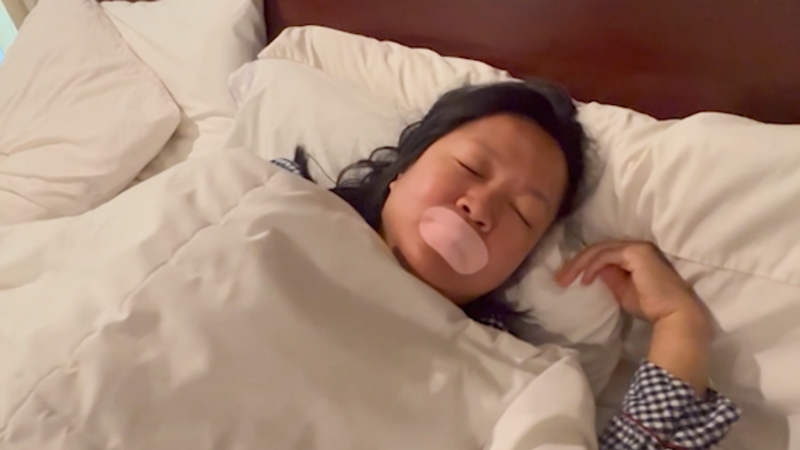
Mouth taping has rapidly gained popularity as a supposed sleep aid, spurred by endorsements from celebrities and social media influencers. This trend has transformed into a billion-dollar industry, prominently showcased on platforms like TikTok. Some influencers assert that this practice dramatically improves their sleep quality and overall well-being. For instance, one user claims it is the “beauty tip of life” that has enhanced her facial appearance, while others emphasize benefits such as reduced snoring and increased energy levels. Despite its rise in fame, experts warn that the practice lacks scientific backing and may pose significant health risks.
Understanding the Risks of Mouth Taping
According to the American Academy of Sleep Medicine, approximately 30 million Americans suffer from sleep apnea, a condition where individuals repeatedly stop breathing during sleep. For those with this condition, mouth taping can severely limit airflow, depriving the body of essential oxygen. Sleep apnea can lead to serious health issues, including heart disease, diabetes, and even premature death if not addressed.
Research led by Dr. Brian Rotenberg, a professor at Western University’s Schulich School of Medicine & Dentistry, indicates that sealing the mouth or taping it shut can create a serious risk of asphyxiation, particularly in individuals with nasal obstructions or regurgitation issues. He noted that many people turn to social media for advice rather than consulting healthcare professionals, which could have dire consequences for their health.
The Importance of Proper Breathing Techniques
The primary goal for many advocates of mouth taping is to encourage nasal breathing, which offers several health benefits. Dr. Raj Dasgupta, an associate professor at Huntington Health, explains that nasal breathing filters out dust and allergens while moisturizing incoming air, reducing irritation to the lungs. Moreover, it has been suggested that this method may help lower blood pressure by increasing nitric oxide in the body.
Yet, simply applying tape to the mouth is not enough to reap these benefits. Ann Kearney, a speech language pathologist at Stanford University School of Medicine, emphasizes the importance of tongue placement. For effective nasal breathing, the tongue must be positioned correctly. She advises that individuals should place the tip of the tongue behind the front teeth and relax it along the upper palate. Without this adjustment, the tongue may obstruct the airway, counteracting the intended benefits of nasal breathing.
If individuals choose to try mouth taping, Kearney recommends using a small piece of thin medical-grade tape instead of more extreme methods seen on social media. “There’s no need for duct tape or large pieces of tape that cover the mouth completely,” she noted.
While the allure of mouth taping continues to grow, potential users should approach the trend with caution. Consulting a healthcare professional before trying this method is crucial, especially for individuals with underlying health conditions such as sleep apnea. As the conversation around sleep hygiene evolves, it is essential to rely on credible information rather than social media trends.







